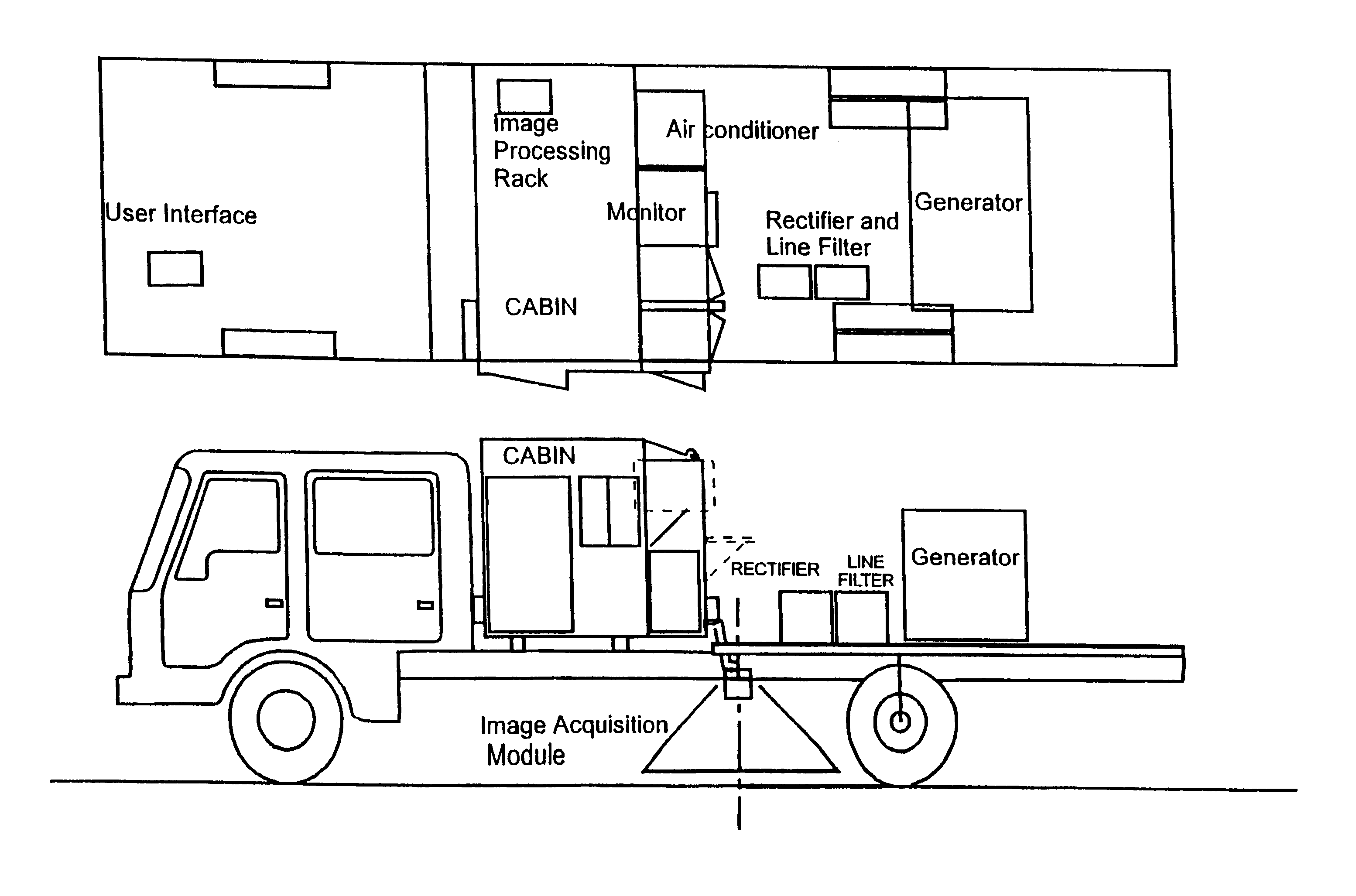Road pavement deterioration inspection system
a technology of inspection system and inspection method, which is applied in vehicle tyre testing, instruments, roads, etc., can solve the problems of insufficient crack related data, current methods that do not detect cracking of road network, rough surface, etc., and achieves reduced risk of injury to data collection personnel, reduced time loss, and less diversion
- Summary
- Abstract
- Description
- Claims
- Application Information
AI Technical Summary
Benefits of technology
Problems solved by technology
Method used
Image
Examples
Embodiment Construction
The present invention provides a modular automated system for crack detection in a pavement and more particularly detects finely cracked roads so that early repairs can be made to raise the overall condition of the road network. The automated crack detection system is contained in a vehicle which might be a truck or the like which is configured to enable all integers of the system to be contained within the vehicle. The parameters of the chosen vehicle are determined according to the operating requirements of the system. At the very least, the vehicle must have electrical mains power mainly for illumination, an ability to scan a predetermined width of pavement along with data capture systems to receive and process data captured by the automated crack detection system. Most of the electrical power is required for lighting so that a power generator located on the vehicle will be sized according to the power requirements per module. Other vehicle parameters include specified clearances...
PUM
| Property | Measurement | Unit |
|---|---|---|
| speeds | aaaaa | aaaaa |
| speeds | aaaaa | aaaaa |
| size | aaaaa | aaaaa |
Abstract
Description
Claims
Application Information
 Login to View More
Login to View More - R&D
- Intellectual Property
- Life Sciences
- Materials
- Tech Scout
- Unparalleled Data Quality
- Higher Quality Content
- 60% Fewer Hallucinations
Browse by: Latest US Patents, China's latest patents, Technical Efficacy Thesaurus, Application Domain, Technology Topic, Popular Technical Reports.
© 2025 PatSnap. All rights reserved.Legal|Privacy policy|Modern Slavery Act Transparency Statement|Sitemap|About US| Contact US: help@patsnap.com



